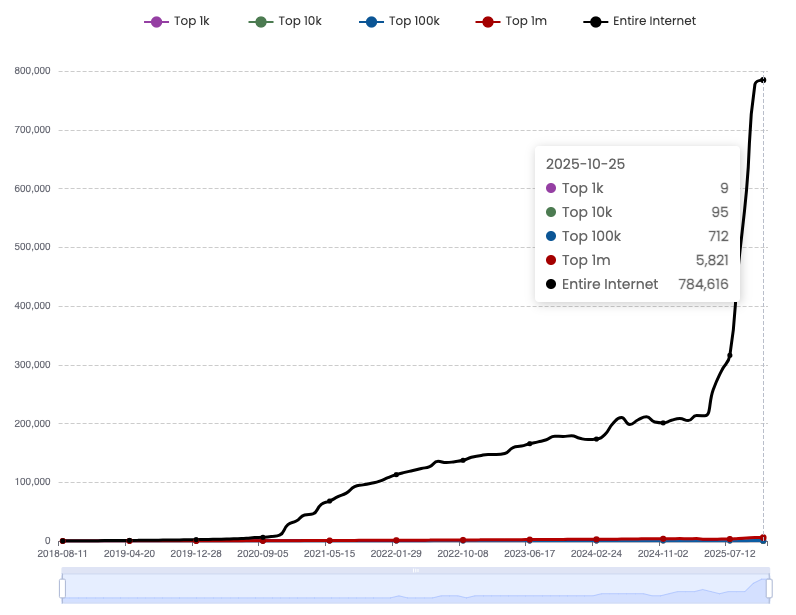Most teams underestimate how much time is lost in the space between design and development. Designers ship beautiful work that must then be interpreted, rebuilt, and translated by developers. Developers take those files and rebuild them inside rigid development environments that do not fully reflect what the designers intended. Leaders feel this friction every week in missed deadlines, slow revisions, and too many hours spent on work that should feel much faster.
Refoundry was created to solve this problem in a way that supports modern agencies and product teams that want to move with far more speed and confidence.
The Power Of A Unified Component Library
Refoundry ships with more than 70 (seventy) prebuilt components that are ready to use inside the platform.
Designers are increasingly working inside structured systems. Figma now reports more than 10 million users as of 2025, a clear signal that component‑based design has become standard in high‑performance teams. This growth reflects a rising demand for tools that support repeatable, scalable design.
On the development side, many teams today rely on utility‑first CSS frameworks like Tailwind, with 59,145 developers at 21,772 companies using it and 784,616 live websites built on the framework*, which shows that utility‑first systems are not niche but are embedded in real production environments.
This alignment between design and code matters deeply. When the very same visual building blocks you use in design match the structure of what developers code, you dramatically close the gap between design intent and implementation. Designers work with pieces that map directly to production. Developers do not have to re-interpret or rebuild the underlying structure. The handoff becomes cleaner and faster.
Refoundry’s component library is built for that. By offering a library of components that reflect both designer intent and developer needs, the platform removes much of the back‑and‑forth that typically slows down projects. This shared component backbone increases clarity across teams and lets everyone work confidently, knowing that design decisions will translate into real, usable UI.
Flexibility Is The Real Differentiator
Many agencies have tried to build their own unified systems with good intentions, but the results often create new friction. Designers work in flexible tools like Figma, where layouts, spacing, and visual elements can be adjusted freely, while developers operate in rigid environments that rely on hard-coded structures and fixed components. Even the smallest design tweak must return to the developer queue, creating a repetitive cycle of waiting that slows projects and frustrates teams. Refoundry removes this barrier entirely by giving design and development a shared, flexible system.
The component libraries in Refoundry are not hard coded.
Every component can be extended, refined, or transformed from project to project. Teams can adjust spacing, add new button styles, change headings, introduce visual elements, and evolve the design system directly inside the editor. All of this happens visually, without writing a single line of code.
This level of flexibility is rare in traditional systems and gives design and marketing teams unprecedented independence. Work moves faster, iterations become smoother, and teams can focus on creativity rather than constantly translating between design and code.
Real Time Editing Creates Immediate Momentum
Refoundry’s live editor is one of the most meaningful contributors to team velocity.
Refoundry’s live editor is one of the most powerful drivers of team velocity because every change appears instantly. There is no refreshing, no uploads, no commits, and no deployment cycles. Small adjustments that once required hours of developer work now happen in seconds. Teams can move through revisions in real time, which transforms the rhythm of a project and keeps momentum high.
Refoundry also leverages Gutenberg-style copy and paste, allowing teams to move full sections, page layouts, or even entire structures from one page or website to another. Work becomes an assembly process rather than a ground-up rebuild. Teams start with strong, reusable patterns instead of a blank canvas, and refine as they go. This approach dramatically reduces cognitive load, accelerates output, and ensures consistency across projects, giving teams both speed and confidence in their work.
Why This Matters In 2025 And 2026
The global design population continues to grow, and more teams are adopting component-based systems like Figma and Tailwind every year. Creative teams expect to work visually, developers expect maintainable systems built from reusable parts, and companies expect faster delivery without sacrificing quality. These pressures are pushing teams toward platforms that reduce complexity rather than add friction.
Refoundry sits at the center of this shift by blending design and development into a single, shared workflow. When design components align with development components, the editor is flexible, and changes appear instantly, the entire organization moves faster and more efficiently. Designers gain ownership of their work, developers reduce backlog, clients experience faster delivery, and leaders gain confidence in timelines that previously felt unpredictable. Refoundry transforms traditional bottlenecks into seamless collaboration, enabling teams to work smarter, faster, and with greater clarity.
The Proof Is In The Workflow
Teams that adopt Refoundry consistently report a meaningful reduction in waiting time. The endless back-and-forth between design and development shrinks, and the cost of change drops because many adjustments can be made directly by designers or project owners. The system scales more easily as reusable components deliver consistent, predictable results across multiple projects.
The biggest transformation comes from the mindset shift.
Teams stop thinking of every page as a unique build and begin to see websites as collections of strong, reusable parts that can be assembled and refined. The work feels lighter, revisions happen faster, and the results feel deliberate and intentional.
Refoundry turns design and development into true partners rather than separate functions. We remove the friction that slows teams down and replaces it with a workflow built for creativity, consistency, and speed. Book at demo and learn why more teams are moving toward systems that allow them to work with clarity instead of chaos.
*according to Reo.dev and BuiltWith
Tailwind CSS Usage Statistics:




